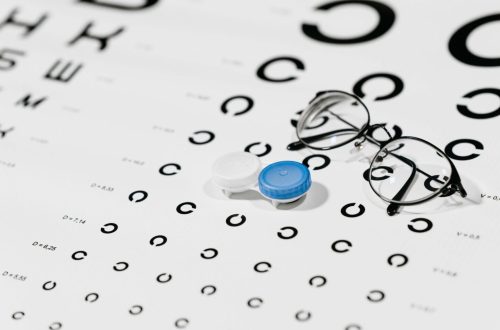Imagine sitting in a bustling cafe, surrounded by friends. However, instead of enjoying the lively chatter, all you hear is muffled noise and distant echoes. You know, for millions of people, these scenarios are a daily reality due to hearing loss.
But what if a small, discreet device could bring back those missing sounds and reconnect you with the world? Well, hearing aids do just that. They are more than just gadgets—they are life-changing tools that enhance communication, restore confidence, and improve overall well-being.
In this article, we’ll explore the fascinating world of these aids in detail. So, without further ado, let’s dive in!
About Hearing Aids
Hearing aids are small electronic devices worn in or behind the ear to amplify sound. They help individuals with hearing loss by making sounds louder and clearer. Modern auditory aids come equipped with advanced technology, including Bluetooth connectivity, noise-cancellation features, and customizable settings. This makes them more effective and user-friendly than ever before.
However, one might restrain from this opportunity by thinking of the budget. But don’t fret! Nowadays, some trustworthy online platforms sell high-quality and inexpensive hearing aids. Not only this, but you can get these tools over the counter. That means you can use them without any hearing test, and there is no need for an audiologist. Additionally, one can get accessories there to meet specific needs.
Hearing Aids Classification
Auditory tools come in various styles and functionalities to cater to diverse needs and preferences. Below are the main types available:
- Behind-the-Ear (BTE):
● These devices fit on the back side of the ear and connect to an earmold inside the ear.
● Suitable for all age groups and a wide range of hearing loss levels.
● Known for their durability and ability to house advanced features due to their larger size.
- In-the-Ear (ITE):
● Personalized to fit the outer portion of the ear.
● Ideal for mild to severe hearing loss.
● Easier to handle and adjust, making them suitable for users with dexterity challenges.
- In-the-Canal (ITC) and Completely-in-the-Canal (CIC):
● Smaller and more discreet than ITE models.
● Fit partially or entirely within the ear canal.
● Best for mild to moderate hearing loss but may not be suitable for individuals with severe hearing loss.
- Receiver-in-Canal (RIC):
● These are somewhat like the BTE devices but with a receiver placed directly in the ear canal for more natural sound.
● Lightweight and discreet, suitable for mild to severe hearing loss.
- Bone-Conduction Aids:
● Designed for individuals with conductive hearing loss or single-sided deafness.
● Transmit sound through vibrations in the bones of the skull, bypassing the ear canal and eardrum.
Benefits of Hearing Aids
These aids offer a range of benefits beyond just improving hearing. They significantly enhance the quality of life for users in the following ways:
- Improved Speech Understanding
Hearing aids amplify specific frequencies, making it easier to hear conversations more clearly. They enhance speech understanding even in noisy settings, improving communication and making interactions more enjoyable.
- Enhanced Mental Health
Addressing hearing loss reduces feelings of isolation, frustration, and depression. It fosters better emotional well-being, helping users feel more connected and confident in their daily lives.
- Cognitive Health Benefits
Hearing aids lower the risk of cognitive decline often linked to untreated hearing loss. By keeping the brain engaged in processing sounds, they help maintain mental sharpness and cognitive health.
- Discretion and Comfort
Contemporary hearing tools are designed to be lightweight and nearly invisible. They offer comfort for all-day wear, ensuring users feel confident and at ease while using them.
How Hearing Aids Work
Hearing tools are built with sophisticated technology to help individuals hear better. They work through a few key components:
- Microphone: Captures sound from the environment and converts it into digital signals.
- Processor: Analyzes the signals and amplifies specific frequencies based on the user’s hearing loss.
- Amplifier: Enhances the digital signals for clearer sound quality.
- Receiver (Speaker): Delivers the amplified sound into the ear canal.
- Power Source: Powered by disposable or rechargeable batteries, ensuring consistent performance.
- Advanced Features: Some hearing aids offer additional capabilities, such as feedback suppression, noise filtering, and direct streaming from smartphones for calls and music.
These components work seamlessly together to enhance the user’s hearing experience, making everyday sounds more accessible and natural.
Conclusion to Draw
Hearing aids are powerful tools that transform the lives of individuals with hearing loss. By understanding the holistic view of them, you can make an informed choice about which device best suits your needs.
Whether it’s regaining the ability to follow conversations, enjoying music, or simply hearing the sounds of everyday life, these aids open up a world of possibilities.






